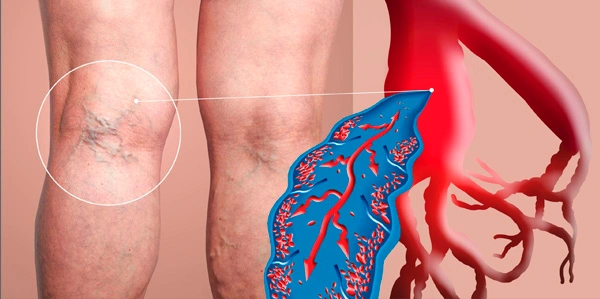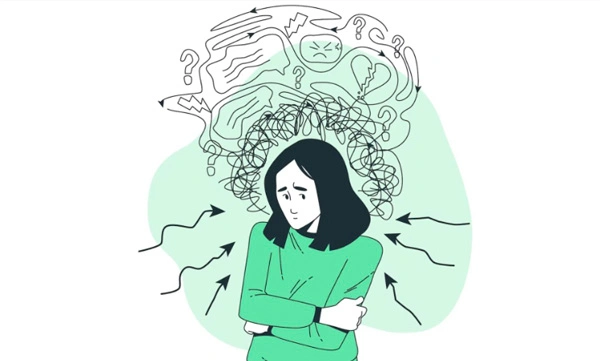G20210A prothrombin mutation

If you tested your DNA with a personal genomics service like 23andMe, AncestryDNA, FamilyTreeDNA, MyHeritage or another testing company, you can learn more about your risk factors for hundreds of diseases. By clicking the button above ⬆️, you can upload your raw DNA data file and receive a personalized 250-page health report with research links that is the most comprehensive.
The Prothrombin G20210A mutation, also known as Factor II mutation, is a hereditary trait that heightens the likelihood of developing anomalous blood clots in the veins (deep vein thrombosis or DVT) and lungs (pulmonary embolism or PE). This occurs due to an excess production of the Factor II (prothrombin) protein, which is responsible for clot formation. Blood clots can lead to severe complications by obstructing blood flow and depriving cells of oxygen.
If your Factor II gene undergoes a genetic mutation, it can result in an overproduction of prothrombin (coagulation factor II), which increases your susceptibility to blood clot formation compared to individuals with an unaltered prothrombin gene.
There are other factors that can increase your risk of developing blood clots, such as:
Tobacco consumption.
Undergoing a surgical procedure.
Being obese.
Pregnancy.
Using contraceptive pills.
Aging.
Undergoing hormone therapy.
Staying in the hospital for a few days.
Wearing a leg cast.
Embarking on an extended flight or an exceedingly lengthy road journey.
The prothrombin (factor two) protein, which aids in blood clotting, is produced by every person. Nevertheless, some individuals possess a genetic mutation in the prothrombin gene (known as prothrombin G20210A or the factor II (two) mutation) that results in an inherited thrombophilia (a clotting disorder) known as prothrombin G20210A. As a result, they generate an excessive amount of the prothrombin protein.
The prothrombin protein is typically generated to facilitate blood clotting and its production increases significantly following damage to a blood vessel.
Individuals with a mutation in the prothrombin gene exhibit an overproduction of prothrombin protein, surpassing the typical levels. This surplus of prothrombin protein in the bloodstream heightens the likelihood of clot formation.
Having a prothrombin gene mutation increases the likelihood of developing a pulmonary embolism or deep venous thrombosis. While it is possible to never experience a harmful clot, being aware of the symptoms can be beneficial in the event that one does occur.
Follow the link of the selected polymorphism to read a brief description of how the selected polymorphism affects Thrombosis and see a list of existing studies.
SNP polymorphisms related to the topic Thrombosis:
| rs2288904 | The SLC44A2 rs2288904 variant is associated with the risk of recurrent venous thromboembolism. |
| rs2227589 | The SERPINC1 rs2227589 prothrombotic polymorphism affects antithrombin levels and risk of deep vein thrombosis. |
| rs6025 | The rs6025(A) allele encodes a mutation known as the Leiden mutation, R506Q, an 11.4-fold increased risk of venous thromboembolism. |
| rs5361 | The rs5361 Ser128Arg variant in this gene, known as E-selectin, is associated with several thrombotic disorders. Homozygous carriers of rs5361(CC) have a 4-fold higher risk of recurrent venous thromboembolism |
| rs2289252 | The rs2289252 F11 polymorphism is associated with the risk of venous thrombosis. |
| rs12343867 | The JAK2 46/1 haplotype confers a predisposition to essential thrombocythemia. |
| rs2066865 | Genetic variability in the fibrinogen-gamma FGG gene increases the risk of deep vein thrombosis by reducing plasma fibrinogen-gamma levels. |
| rs1799963 | G20210A mutation of the prothrombin F2 gene. 6.74-fold risk of thrombosis |
| rs268 | A break in the LPL lipoprotein lipase gene causes a 3-fold increased risk of idiopathic venous thromboembolism. |
| rs201381904 | A 10-fold higher risk of venous thromboembolism among rs201381904(T) carriers despite normal levels of antithrombin and anticoagulant activity. |
| rs4524 | |
| rs6046 | |
| rs6048 | |
| rs174536 | |
| rs216296 | |
| rs216311 | |
| rs579459 | |
| rs657152 | |
| rs670659 | |
| rs687289 | |
| rs710446 | |
| rs867186 | |
| rs1048483 | |
| rs1558519 | |
| rs1613662 | |
| rs1654425 | |
| rs1671135 | |
| rs1800595 | |
| rs1867312 | |
| rs2036914 | |
| rs2066864 | |
| rs2074492 | |
| rs2519093 | |
| rs2842700 | |
| rs2851436 | |
| rs3002417 | |
| rs3136516 | |
| rs3211752 | |
| rs3756008 | |
| rs4253417 | |
| rs4253421 | |
| rs4541868 | |
| rs4548995 | |
| rs4734879 | |
| rs4851770 | |
| rs4869589 | |
| rs6083037 | |
| rs6088735 | |
| rs6427196 | |
| rs6795524 | |
| rs7051718 | |
| rs7080536 | |
| rs7585314 | |
| rs7739314 | |
| rs8176749 | |
| rs9373523 | |
| rs9411377 | |
| rs9607928 | |
| rs10087301 | |
| rs10747514 | |
| rs10886430 | |
| rs12445050 | |
| rs12824685 | |
| rs13084580 | |
| rs13146272 | |
| rs16867574 | |
| rs57328376 | |
| rs137852283 | |
| rs138925964 | |
| rs143478537 | |
| rs191945075 | |
About The Author
Li DaliLi Dali, a National Foundation for Outstanding Youth Fund recipient, is a researcher at the School of Life Sciences in East China Normal University. He earned his PhD in genetics from Hunan Normal University in 2007 and conducted collaborative research at Texas A&M University during his doctoral studies. Li Dali and his team have optimized and innovated gene editing technology, leading to the establishment of a world-class system for constructing gene editing disease models.


